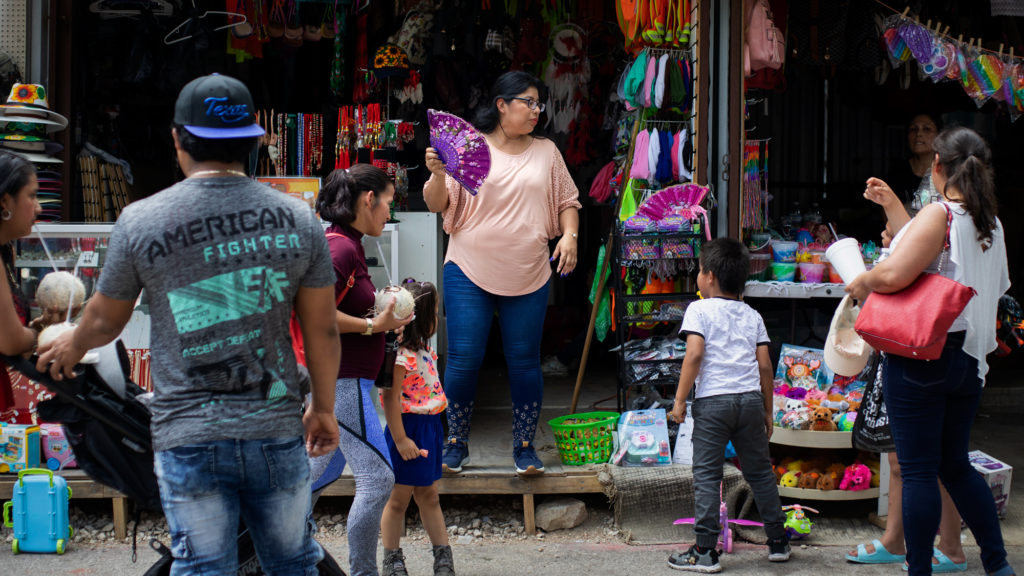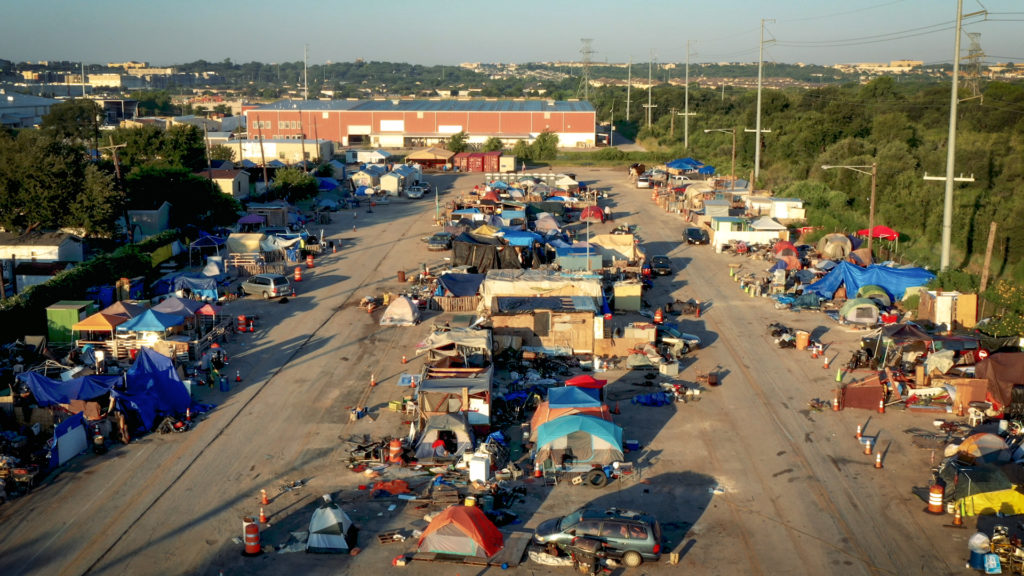It was barely a week into the shelter-in-place orders issued for Nueces County, and the Coastal Bend Food Bank (CBFB) was running out of food.
With record unemployment sweeping the country, Corpus Christi and surrounding coastal areas that rely heavily on tourism and the oil and gas industry were hit especially hard. People who never needed a food bank before were suddenly experiencing food insecurity, and the food bank had to adjust quickly to meet the growing demand.
“We doubled the number of people we were serving,” says Bea Hanson, executive director of CBFB. “We served 7,000 families in one day.”
As needs increased throughout the community and across the country, many social services were closing down due to lack of funding or volunteers. CBFB was within two weeks of running out of food, when suddenly donations started pouring in.
“People were just sending us checks,” Hanson says. “Seeing us in action brought the response from the community.”
The money came from a wide variety of sources — individual donors, the local rotary club, even nearby refineries, which account for a huge part of the economy in the coastal bend area.
Hanson was amazed to see donations from outside the state and as far away as Japan, and touched by one 9-year-old’s $25 check with a note attached: “Thank you for all you do.” But the bulk of contributions came from local sources, including the local United Way chapter, which started a COVID relief fund.
Coastal Bend Food Bank was one of the first [recipients of the fund],” says Donna Hurley, vice president of community impact at United Way of the Coastal Bend. “They do what they do very well.”
With the resources in place, the food bank could focus on distributing food to the 11 counties they serve. They switched to a drive-through model to keep social distancing guidelines in place, and began delivering to seniors or high-risk individuals who couldn’t leave their homes.
The organization was able to respond to the crisis and scale up quickly, delivering an additional 2,800,000 pounds of food on top of their regular one million pound monthly delivery since the start of the pandemic. Their success was due partly to massive support from the community, and partly, in a strange way, because of Hurricane Harvey.
“Harvey was like a training camp,” Hanson says. “With Harvey, we learned how to do mass distribution drive-throughs.”
In the aftermath of Harvey, the second-most costly hurricane to hit the U.S. since 1900, CBFB also invested in refrigerated trucks to keep food cold, a necessity in the coastal bend of Texas, where temperatures easily push 100 degrees by early summer. Staff learned to use the power of social media, and to work together as a community.
“Everybody does emergency planning, all over the country, but once something actually happens is the true test,” says Hurley, who saw how the aftermath of the hurricane prepared her organization to respond in a crisis as well. “Harvey was the first large-scale natural disaster in 40 years. That experience did help in terms of disaster response.”
Hurricane Harvey was of course much more than a training exercise. The devastating category 4 hurricane that hit land in 2017 decimated parts of the Texas coast, including Port Aransas and Rockport, and left one-third of Houston underwater. Hundreds of thousands of homes were damaged. The remnants of the storm can still be seen in messages spray-painted on the sides of buildings, and empty plots of land where a house was demolished and never rebuilt.
Ed Tarpley and his family only recently moved back into their home, nearly three years after the storm.
“One thousand seven days,” Tarpley says as he looks around the newly finished three-bedroom house constructed by Coastal Bend Disaster Recovery Group, which has rebuilt more than 100 homes destroyed by Harvey. “That’s how long it took.”
For the first two months after the hurricane, Tarpley and his wife and teenage son lived with friends. The electricity was out for more than a week, so Tarpley brought over a generator and they all slept in the living room. Tarpley lost his job as a result of the storm, but found work at the Coastal Bend Food Bank in maintenance, a skill Tarpley had learned from his dad.
“When I first started there, it was a job,” Tarpley says, remembering his first few weeks at the food bank, “but it’s become so much more. It’s a great place to be, and you can’t find better people.”
Tarpley has seen the increased need for food in the community as a result of the pandemic, and he’s pitched in to drive a truck when needed, or filled in wherever he can.
“[COVID-19] has changed how we do things, but the mission hasn’t changed,” he says.
Even though he knows the threat of the virus is still very much present, Tarpley is heartened to see volunteers beginning to return.
“The need is still there,” he says, “and it’s wonderful to see more volunteers back at the food bank.”
Bonnie Castro started volunteering at the food bank after being laid off from her job at a hotel, an industry hit hard by the sudden drop in tourists. She has shown up every day since then to help. “It’s like a family here,” she says as she loads boxes of food and stacks them onto pallets.
She and volunteer Melissa Estringel are affectionately known at the food bank as “The A Team” because the pair has been working daily shifts since March. Estringel is still working her full-time job as a supervisor with a local cleaning service, but she says she doesn’t mind the extra work. “It’s a nice environment, and it feels better to be around other people,” she says.
Both Hanson and Hurley have seen this act of pulling together by the community before — it happened after Hurricane Harvey. “We pride ourselves that we do that for one another,” Hurley says.
But COVID-19 is different — it affects every single person and every single organization. Hurley has seen many nonprofits close their doors already, especially those that weren’t prepared to operate in an emergency situation.
“Not all nonprofits do emergency assistance,” she says, “but it’s pieces of the whole that are our entire community. If the pieces start falling away… where does that leave us all?”
Just as the Coastal Bend Food Bank settles into a new rhythm in response to the pandemic, another hurricane season has arrived.
On June 1, the first official day of the season, Hanson received a call from the local newspaper, asking if the food bank was prepared.
“We are more prepared than we have ever been,” Hanson said. “We are now running marathons.”
Hanson and her team continue to plan for possible disasters, as they do every year, knowing they can never predict what’s coming next. But the experience of providing for the community during Hurricane Harvey and COVID-19 has left them better positioned to deal with whatever may lie ahead.
“Every disaster will bring new lessons,” she says, “but this year we are more prepared than any year before. Every day we are out there somewhere in the 11 counties we serve. Every day.”













